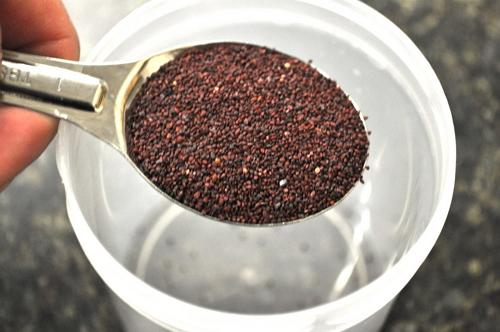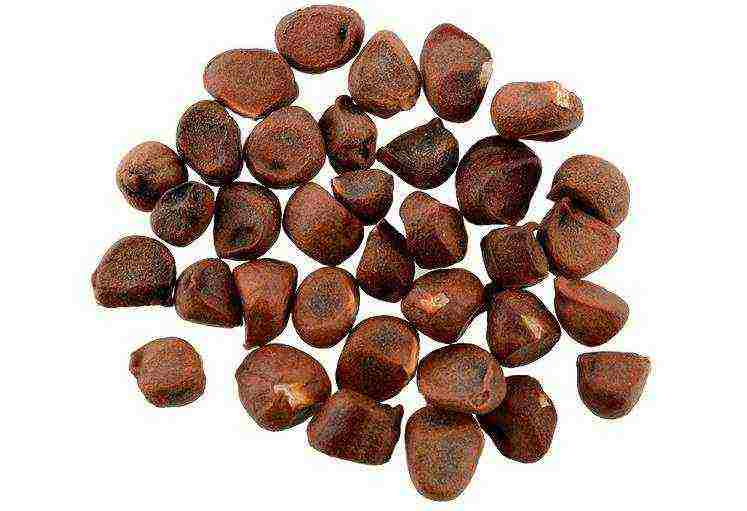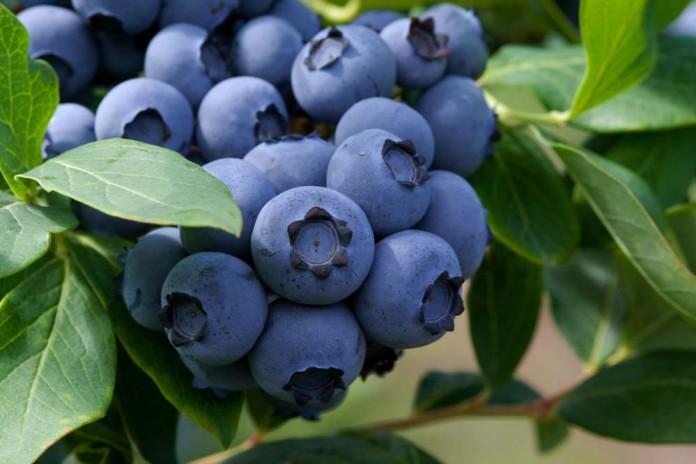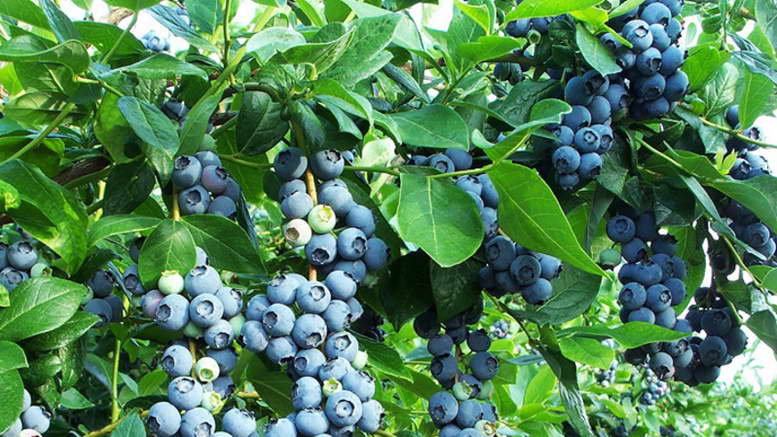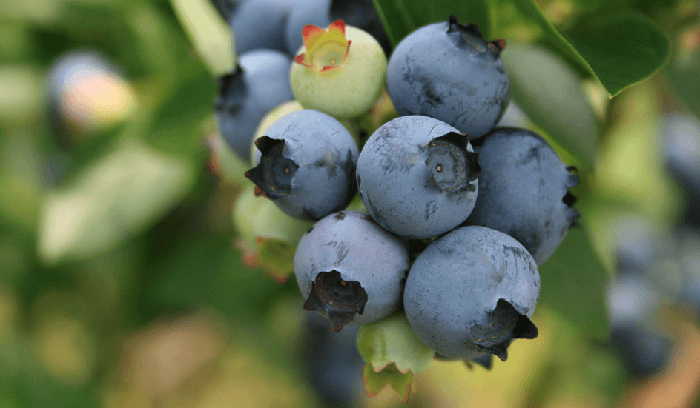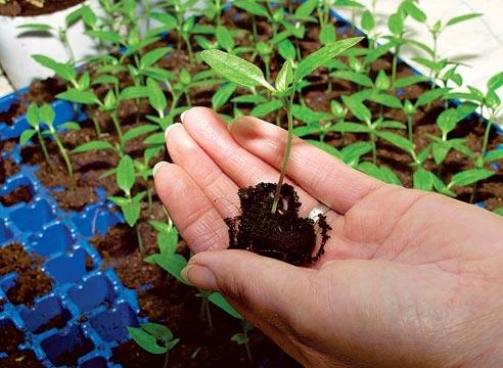The common blueberry is a type of berry that grows wild in the Northern Hemisphere, where temperate or cold climates prevail. Blueberries grow along rivers and streams. It occurs in the form of single bushes or extensive growths. Blueberries are known as unpretentious shrubs, but growing wild berries from seeds at home is quite difficult.
Features of the plant
The height of the bush can reach 1 meter.When there is an excess of free space, the branches begin to spread along the ground.
- Trunk. Over time, the trunk becomes completely woody. The shrub branches in both directions; small semi-oval leaves covered with a waxy coating grow on the branches.
- Roots. Type of system – fibrous. The roots do not develop small hairs, so the supply of nutrients from the soil occurs slowly.
- Fruit. Small dark purple berries with juicy pulp and pale blue juice contain useful substances that help strengthen the heart muscle and normalize blood counts.
Blueberries are considered resistant to infections and pests. For a comfortable existence, it needs acidic soil. In addition, it is a moisture-loving shrub, which, at the same time, does not tolerate excess water.
Blueberry planting material: what it looks like
The most common growing method among gardeners is planting ready-made seedlings. But many summer residents try to germinate blueberries from seeds at home. Seeds can be purchased at the store or prepared yourself.
The seeds are obtained from ripened berries. They can be round or oval, and the color varies from light brown to dark brown. After separating the seeds from the pulp, they are washed with warm water and dried. The seeds harden quickly, but this does not impair their planting properties. The material can be stored for about 10 years.
Reproduction methods
Garden blueberries are propagated in several ways:
- Seeds. This method is considered the longest. Before breeding, the seeds are pre-treated. They then go through the rooting stage, after which they are planted at the growing site.
- Cuttings. This path begins with choosing a seedling and planting it.
- By layering.The complex grafting process depends on the type of scion, the correct choice of variety and compliance with the conditions for breeding from the mother plant.
Seed propagation begins with the selection of planting material. You can select seeds from berries ripened in August, then plant them in your dacha or plot after the necessary processing. Planting material purchased after long-term storage is recommended to be planted in the spring.
On the street
This method involves sowing material into prepared soil. Before sowing, preparatory work is carried out:
- the soil is fertilized with peat,
- measure the acidity level, correct it, if necessary, with additional mixtures;
- seeds are sown in the top layer of soil; the depth should not exceed 1.5 centimeters.
When planting, you should take into account the level of soil heating. If the soil temperature is below +10 degrees, the seeds may not germinate.
Warning! Fresh planting material is not germinated. In preparation, soaking the seeds is sufficient.
In room
This method is called seedling. Seeds are prepared and germinated at home, before planting in open ground in the spring. Early autumn is suitable for sowing seedlings. Over the winter, the seeds take root and in the spring they are placed in open ground.
What varieties is it suitable for?
Not all blueberry varieties can be grown from seed. Only a few varieties are suitable:
- Patriot. A late-fruiting variety, it is characterized as frost-resistant. Harvesting begins in early August.
- Canadian nectar. The bushes of this variety can reach 2 meters; the berries ripen in early September.
- Blue scattering. This is a hybrid variety whose berries are large in size.
- Forest treasure.A hybrid with high yields, fruiting lasts longer than other varieties.
- Blue con. Frost-resistant, high-yielding hybrid, ripens in the second half of July.
Necessary conditions for cultivation
Planting berries in a garden plot is the simplest stage of growing blueberries. Care includes some features:
- shrubs grow on acidic soils, so it is necessary to check the acidity throughout the growing season;
- blueberries are not planted in lowlands to eliminate the risk of waterlogging; the best option for planting blueberries is a sunny place, inaccessible to draft winds;
- To form full-fledged fruits, blueberries need to receive a sufficient amount of sunlight; the minimum period of daylight during fruit ripening is 10 hours;
- the advantage of the shrub is that before the first frost the branches have time to become woody, so they are called frost-resistant; they do not freeze out when the air temperature drops sharply;
- if the temperature drops below -20 degrees, then the blueberry bushes are additionally covered with industrial materials;
- Harvesting is carried out in stages, since the ripening of blueberries is uneven;
- gardeners advise planting different varieties on the site, this helps to increase the yield of the species.
Soil preparation
Preparing the soil for planting blueberries begins long before the process itself. To achieve the required acidity level, the soil is treated with one or more means:
- colloidal sulfur;
- lemon juice;
- acetic acid.
After treatment, loosening is carried out, then it is repeated every two weeks. To mulch the soil, use a cushion of mowed grass, pine needles or sawdust.
Warning! The use of wood ash when planting blueberries is excluded. Wood ash reduces acidity levels, which affects the development of the root system.
Germination
To speed up the growth of blueberries, the seeds are processed. Processing includes two stages:
- Preliminary stratification, that is, storing planting material in the refrigerator to increase its protective properties.
- Soaking planting material to improve rooting ability.
After processing, the seeds are placed on the top layer of soil in a low container and sprinkled with sand. The container is covered with a plastic lid. The mechanism of action of the prepared structure is to create a greenhouse effect. This condition increases the ability of seeds to germinate by causing condensation and increasing soil temperature. The mini-greenhouse is left in a warm, sunny place until shoots appear. The period from sowing to the appearance of shoots is about 30 days.
Agricultural technology
The peculiarities of growing blueberries are that the soil under the bushes is not fertilized with organic complexes throughout the entire growing season. The main task of gardeners is to prevent soil oxidation, which reduces yields and impairs the taste of blueberry fruits.
A planting hole for a shrub is dug according to the formula: 60 by 60 centimeters. In the planting pit, the prepared seedling is placed vertically, and the transshipment planting method is used.
For blueberries, such agrotechnical practice as weeding is important. Loosening is carried out carefully so as not to catch the root system. To increase yield levels, bushes are regularly pruned to prevent blueberries from growing uncontrollably.
Care
Caring for blueberry bushes includes several basic techniques:
- Irrigation. Gardeners know from experience that blueberries do not like watering with cold water. Settled water is used for irrigation. Watering is carried out in the early morning or late evening.
- Mulching. An important agrotechnical technique. It is used to protect the soil from the hot sun. A thin layer of sawdust is considered a suitable material.
- Landing. Rows of bushes are planted at a distance of no closer than 2 meters from each other.
- Trimming. Spring pruning involves removing damaged branches in the spring and removing old branches in the fall.
Growing seedlings
After the seedlings appear on the windowsill, the seedlings are removed to another place. The pot can be placed on the balcony or loggia of the apartment, where it is necessary to ensure that the temperature is maintained from +18 to +23 degrees
Within a few months, the shoot takes root, acquires 3-4 true leaves, the thin stem partially becomes woody, then the seedlings begin to prepare for planting in a permanent growing location. Deterioration in the appearance of the seedling indicates a lack of minerals or a change in soil acidity. In this case, feeding blueberries with special acidic mixtures will be a timely support measure.
Planting a shrub in a permanent place of growth
The danger that awaits gardeners when growing blueberries in their garden is a decrease in soil acidity. Blueberries respond to changes in acidity by reducing yield and inability to form full-fledged fruits. To prevent this, in regions where the acidity of the soil changes rapidly, summer residents use an unusual method.
The bottom of the prepared hole is covered with plastic film, perforations are made in it, then a drainage layer is placed, covered with soil and a blueberry bush is planted. Propagation of blueberries by seeds is a technology in which full results are not guaranteed. The main task of gardeners is to control soil acidity; It is also necessary to monitor soil moisture.

